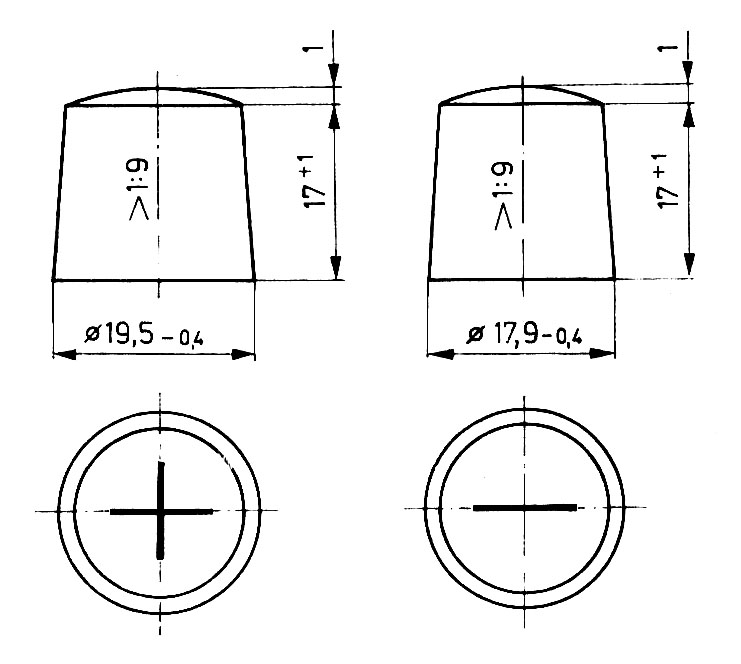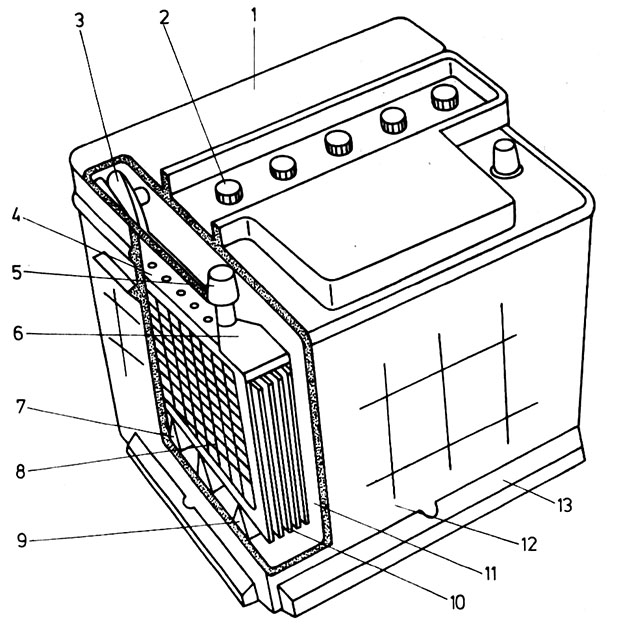The battery is a reversible electrochemical power source. In other words, electricity can be collected and collected therein, each of the phases of its work is associated with chemical reactions taking place inside it. It is a set of cells (batteries) electrically connected to each other and enclosed in separate cells inside the housing (block).
From the two extreme links, one end was brought out. These are the so-called. battery terminals: positive and negative. They have the shape of truncated cones of the same height (ok. 17 mm), but with different diameters. The positive terminal has a larger diameter. It is at the base 19,5 mm and is marked on the top surface with a symbol ( + ). Negative tip, base diameter 17,9 mm, is marked with a symbol (—). In some battery solutions, the polarity marking is placed on the surface of the block or lid.
Car battery terminals.

The terminals are designed to connect the battery to the car's electrical circuit. The connecting wires are terminated on one side with special terminals, which are put on and clamped onto the battery terminals. One of the wires is connected to the ground of the vehicle, the other with the pacemaker and other consumers. In most cars produced today, the negative pole is connected to the ground.
The manufacturer must provide at least the following information on each battery: distinguishing mark (containing group symbols, type and size), rated voltage and rated capacity, discharge current value at -18°C, your name or trade mark and the number of the standard, which the battery was manufactured. These data, placed side by side on the battery housing, make up the so-called. battery nameplate. Other informations, i.e. polarity marking and date of manufacture, usually placed on the lid.
Domestic car batteries (boot) are marked with symbols depending on their qualification for the so-called. ranks: primary and secondary.
Construction of a car battery:

1 — monolith, 2 — matches, 3 - interconnector, 4 - electrolyte vibration damper, 5 - pole end, 6 - pole bridge, 7 - settling chamber, 8 - plates with active mass, 9 - threshold, 10 - separators, 11 - inter-cell bulkhead, 12 — block (case) battery, 13 - threshold (rim) for attaching the battery.
A single battery cell consists of alternating negative and positive plates. The distance between the plates is large enough, so that only the separators will fit (separators), the task of which is to prevent mechanical shorting of the positive and negative plates and to prevent the flow of impurities from plate to plate. Separators are usually made of microporous materials (mostly PVC), but specially treated resins or paper are also used. Regardless of the type of material used, the separator should allow free movement of the electrolyte around the surface of the plates and the flow of ionic current (for the electron current it is an insulator). Plastic separators usually lose their insulating properties at temperatures above 50°C, therefore pay attention to the temperature of the electrolyte when charging.